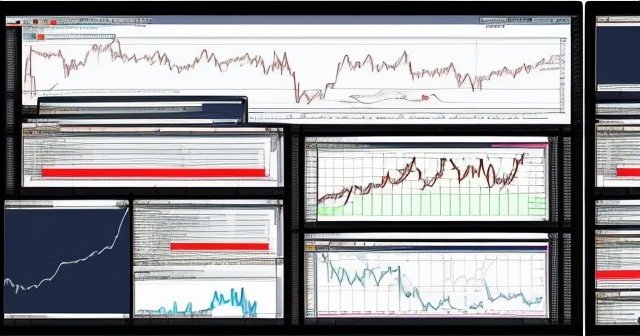
Trading Terms You Must Master: 15 Essential Vocabulary for New Traders
Table of Contents
ToggleDecoding the Market: Essential Trading Terminology Every Trader Needs to Master
Welcome to the dynamic world of financial trading! Whether you’re just starting out or looking to deepen your understanding, navigating the markets effectively hinges on mastering its unique language. Like any specialized field, trading comes with its own extensive vocabulary. From seemingly simple terms like ‘buy’ and ‘sell’ to complex concepts like ‘arbitrage’ and ‘gamma squeeze,’ a solid grasp of trading terminology is not merely beneficial – it’s absolutely crucial for making informed decisions, executing strategies with precision, and managing the inherent risks of the market.
Think of learning trading terms as acquiring the tools and blueprints needed to understand a complex machine. Without the right vocabulary, you might see the parts moving, but you won’t understand the mechanics, the forces at play, or how to interact with it safely and effectively. Our goal here is to serve as your guide, breaking down the jargon and providing clear explanations. We want to equip you with the knowledge necessary to understand market dynamics, interpret data accurately, and build confidence on your trading journey. Let’s begin by laying the essential groundwork.
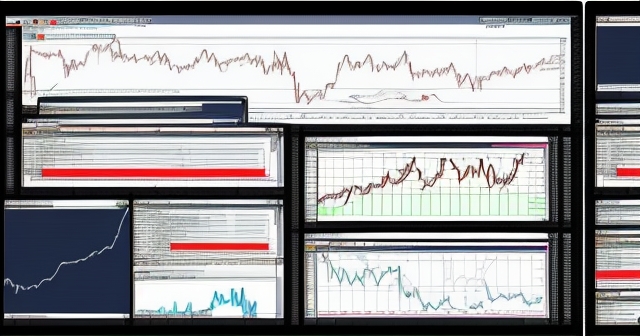
Every transaction in the financial markets, from buying a single share to trading vast quantities of currency, relies on a few fundamental concepts. Understanding these is the first step toward executing trades with confidence.
At the heart of any trade are the Bid and the Ask Price. Imagine a bustling marketplace. The Bid is the highest price a buyer is currently willing to pay for an asset. Conversely, the Ask Price (sometimes called the ‘Offer’) is the lowest price a seller is willing to accept for that same asset. The difference between these two prices is known as the Bid-Ask Spread. This spread represents the cost of trading and can vary significantly depending on the asset’s liquidity and market conditions. A narrow spread usually indicates high liquidity and active trading, while a wide spread might suggest lower liquidity or higher volatility.
Liquidity is another critical term. It refers to how easily an asset can be bought or sold without significantly affecting its price. Highly liquid markets, like major currency pairs or large-cap stocks, have many buyers and sellers, making it easy to enter or exit positions quickly at prices close to the market value. Illiquid assets, on the other hand, might be harder to trade, potentially resulting in larger price swings or difficulty finding a counterparty.
Related to liquidity is Volatility. This measures the rate and magnitude of price changes for an asset. A highly volatile asset can experience rapid and dramatic price swings in either direction over short periods. This presents both opportunities for quick profits and significant risks of rapid losses. Understanding an asset’s volatility is key to setting appropriate stop-loss orders and managing position size.
Finally, Trading Volume refers to the total number of shares, contracts, or units of an asset traded during a specific period. High volume often accompanies significant price moves, indicating strong market interest or conviction behind the trend. Low volume, conversely, might suggest less interest and potentially false or unsustainable price movements.
- Bid: The highest price a buyer is willing to pay.
- Ask Price: The lowest price a seller is willing to accept.
- Bid-Ask Spread: The difference between the Ask Price and the Bid.
- Liquidity: How easily an asset can be bought or sold without impacting its price.
- Volatility: The degree of variation of a trading price over time.
- Trading Volume: The total number of units traded in a given period.
These terms form the very foundation of how transactions occur in the market. Without understanding the simple concepts of who wants to buy, who wants to sell, and at what prices, you’re trading blind.
The following table summarizes the foundational trading terms and their meanings:
| Term | Definition |
|---|---|
| Bid | The highest price a buyer is willing to pay. |
| Ask Price | The lowest price a seller is willing to accept. |
| Bid-Ask Spread | The difference between the Ask Price and the Bid. |
| Liquidity | How easily an asset can be bought or sold without impacting its price. |
| Volatility | The degree of variation of a trading price over time. |
| Trading Volume | The total number of units traded in a given period. |
Your First Steps: Understanding Order Types
Once you understand the basic mechanics of Bid and Ask, you need to know how to actually place a trade. This is where Order Types come in. Choosing the right order type is crucial for controlling your entry and exit prices and managing risk.
The most basic order is a Market Order. This tells your broker to buy or sell the asset immediately at the best available current price. While it guarantees execution, it does not guarantee a specific price. In fast-moving or illiquid markets, the execution price for a market order might be significantly different from the price you saw when you placed the order, executing instead at the prevailing Bid (for a sell) or Ask (for a buy). This difference is known as Slippage.
To gain more control over your price, you can use a Limit Order. A buy limit order is placed below the current market price, and it will only execute if the price drops to or below your specified limit. A sell limit order is placed above the current market price and will only execute if the price rises to or above your specified limit. Limit orders guarantee price but do not guarantee execution – the market might never reach your specified price.
Beyond these basic types, orders also have conditions. A Day Order is valid only until the end of the current trading session. If it hasn’t been filled by market close, it’s automatically cancelled. A Good ‘Til Canceled (GTC) Order, on the other hand, remains active until you manually cancel it or it’s filled. Brokers usually have a maximum time limit for GTC orders (e.g., 60 or 90 days).
Another essential order type, particularly for risk management, is the Stop Order (or Stop-Loss Order). A buy stop order is placed above the current market price and becomes a market order once the specified stop price is reached or breached. This is often used to limit potential losses on a short position or to enter a long position as a breakout strategy. A sell stop order is placed below the current market price and becomes a market order when the price falls to or below the stop price. This is commonly used to limit losses on a long position.
It’s important to understand the difference between a simple Stop Order and a Stop-Limit Order. A stop-limit order combines the features of a stop order and a limit order. When the stop price is reached, it triggers a limit order instead of a market order. This gives you more price control (like a limit order) but, like a limit order, doesn’t guarantee execution if the triggered limit price isn’t met by the market. For example, a sell stop-limit order with a stop at $50 and a limit at $49 means that if the price hits $50, a limit order to sell at $49 is placed. If the price then falls rapidly below $49, your order might not fill.
Understanding these order types allows you to execute your trading strategy precisely and manage risk effectively by setting predefined entry and exit points.
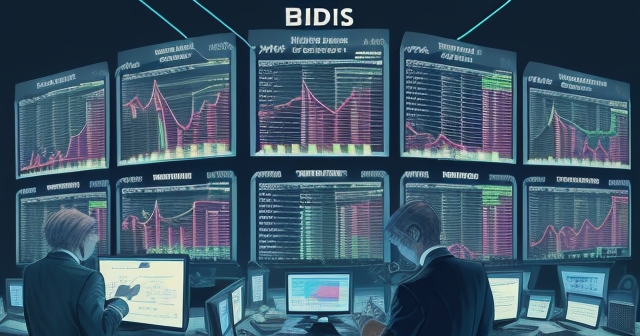
Reading the Room: Understanding Market Sentiment and Trading Styles
The collective attitude or feeling of investors towards a particular market or asset is known as Market Sentiment. This sentiment can significantly influence price movements, often more so than fundamental data in the short term. The two primary sentiments are Bullish and Bearish.
A Bullish sentiment prevails when investors are optimistic and expect prices to rise. This leads to buying pressure and upward price trends, characteristic of a Bull Market. Conversely, a Bearish sentiment indicates pessimism and the expectation of falling prices, leading to selling pressure and downward price trends, characteristic of a Bear Market.
Sentiment isn’t just an abstract concept; it drives trading actions. If you are Going Long, you are buying an asset with the expectation that its price will increase. This is a bullish position. If you are Going Short (or Short Selling), you are selling an asset you don’t own (typically borrowed from your broker) with the expectation that its price will fall, allowing you to buy it back later at a lower price and return it, profiting from the difference. This is a bearish position.
Your market sentiment and time horizon often dictate your Trading Style. Two common styles are Day Trading and Swing Trading.
Day Trading involves opening and closing trading positions within the same trading day, never holding positions overnight. Day traders aim to profit from short-term price fluctuations and often execute numerous trades daily. This style requires intense focus, rapid decision-making, and a deep understanding of short-term market dynamics.
Due to the high frequency and rapid nature of day trading, regulatory bodies have specific rules. In the United States, the Pattern Day Trader Rule (PDT Rule) requires traders who make four or more day trades within five business days (provided the number of day trades represents more than six percent of the total trades in the account during that period) to maintain a minimum equity of $25,000 USD in their margin account. Falling below this threshold restricts trading activity.
Swing Trading, on the other hand, involves holding positions for several days to a few weeks. Swing traders aim to capture gains within a short to medium-term trend or “swing” in price. This style requires less time commitment than day trading but necessitates patience and the ability to hold through short-term market noise.
Understanding your own risk tolerance, time availability, and market sentiment helps you choose a trading style that aligns with your goals and personality.
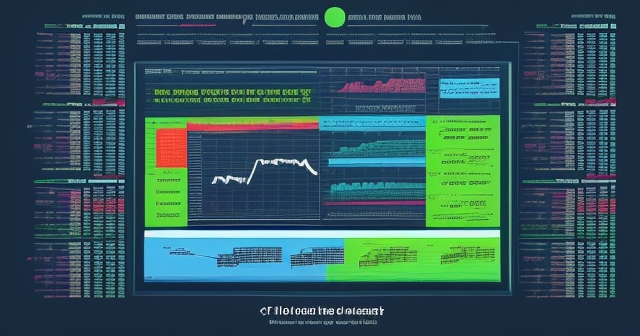
The Instruments of Trade: Asset Classes & Financial Instruments
The financial world offers a vast array of instruments you can trade. Knowing what they are and how they work is fundamental. These instruments are typically grouped into different Asset Classes.
Perhaps the most common asset class for beginners is Stocks (also known as Equities or Shares). When you buy a stock, you are buying a small ownership stake in a publicly traded company. The price of a stock fluctuates based on the company’s performance, industry trends, market sentiment, and overall economic conditions.
Bonds represent debt. When you buy a bond, you are essentially lending money to a government or corporation for a specified period in exchange for regular interest payments (coupon payments) and the return of the principal when the bond matures. Bonds are generally considered less volatile than stocks but offer potentially lower returns.
The Forex market (Foreign Exchange) involves trading currency pairs, such as EUR/USD or GBP/JPY. You are speculating on the exchange rate between two currencies. It is the largest and most liquid financial market globally, operating 24 hours a day during the week.
Commodities are raw materials like oil, gold, silver, natural gas, agricultural products (wheat, corn), and metals. Traders can speculate on the future price movements of these materials through various instruments, often futures contracts.
Beyond these traditional asset classes lie Derivatives. These are financial contracts whose value is derived from an Underlying Asset (which could be a stock, bond, currency, commodity, index, etc.). Derivatives allow traders to speculate on the price movement of the underlying asset without owning it directly.
Common types of derivatives include:
- Options: Give the buyer the right (but not the obligation) to buy (a Call Option) or sell (a Put Option) an underlying asset at a specific price (the Strike Price) on or before a certain date (the Expiry Date). Options trading involves complex strategies and significant risk.
- Futures Contracts: Are standardized legal agreements to buy or sell a specific commodity or asset at a predetermined price at a specified time in the future. Unlike options, futures contracts are an obligation for both the buyer and the seller to complete the transaction.
- Contracts for Difference (CFDs): Are agreements to exchange the difference in the current value of an asset and its value at the time the contract is closed. CFDs are popular for speculating on price movements in various underlying assets (stocks, indices, currencies, commodities) without owning the asset. They often involve Leverage, which can magnify both profits and losses.
CFDs and similar leveraged products like spread bets are often highlighted as carrying a high risk of rapid losses, particularly for retail investors. Many brokers publish data showing a significant percentage of retail trading accounts lose money when trading these products. This underscores the importance of understanding leverage and implementing strict risk management.
If you’re considering beginning Forex trading or exploring more CFD products, Moneta Markets is a platform worth considering. It originates from Australia and offers over 1000 financial instruments, suitable for both beginners and professional traders.
| Asset Class | Description |
|---|---|
| Stocks | Ownership stakes in publicly traded companies. |
| Bonds | A form of debt investment with regular interest payments. |
| Forex | Currency trading, speculating on exchange rate changes. |
| Commodities | Raw materials like oil, gold, and agricultural products. |
| Derivatives | Contracts based on the value of underlying assets. |
Pooled investment vehicles like Exchange Traded Funds (ETFs) and Mutual Funds offer diversified exposure to a basket of assets. ETFs trade on exchanges like stocks, while mutual funds are typically bought directly from the fund provider.
Beyond the Share Price: Corporate Actions
When trading stocks, it’s vital to understand that a company’s actions can directly impact the shares you trade. These are known as Corporate Actions.
An Initial Public Offering (IPO) occurs when a private company first sells shares to the public on a stock exchange. This is how a company “goes public.” An IPO increases the total number of shares available to the public, known as the Float.
A Secondary Offering (or Follow-on Offering) happens when a company that is already public issues new shares to the public. Like an IPO, this also increases the Float.
Conversely, a Share Buyback (or Stock Repurchase) occurs when a company uses its cash to buy back its own shares from the open market. This reduces the number of outstanding shares and the Float, which can potentially increase the value of the remaining shares.
A Stock Split is when a company increases the number of its outstanding shares by dividing existing shares into multiple shares. For example, a 2-for-1 stock split means each shareholder receives an additional share for every share they own. The share price is adjusted proportionally (cut in half in a 2-for-1 split), so the total market capitalization remains the same immediately after the split. Splits make shares more accessible to smaller investors by lowering the price per share.
A reverse stock split reduces the number of shares outstanding and increases the price per share proportionally.
The Float is a crucial term, representing the number of shares actively trading in the market, excluding restricted shares held by insiders, promoters, or governments. It is a key factor in assessing a stock’s liquidity.
Other related terms include Authorized Shares (the maximum number of shares a company is permitted to issue according to its corporate charter) and Outstanding Shares (the total number of shares issued, including those held by insiders). The Float is a subset of Outstanding Shares.
Understanding these corporate actions helps you anticipate potential impacts on share price and supply.
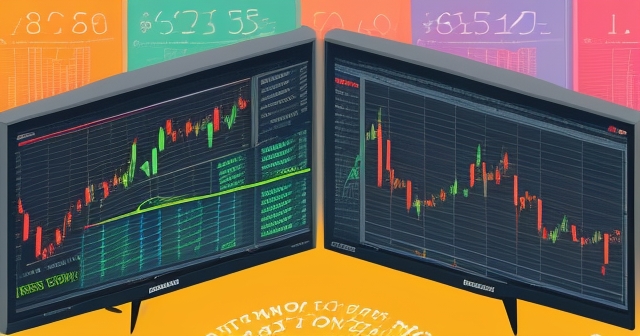
Managing the Battlefield: Risk Management & Account Terms
Trading involves inherent risk, and effective risk management is paramount for long-term success. Certain terms are specifically related to managing your capital and the risks you take.
Margin refers to the money borrowed from your broker to make a trade. Trading on margin allows you to control a larger position with a smaller amount of your own capital. The portion of the position value that you fund is called the Margin Requirement or Initial Margin.
The use of margin is directly linked to Leverage. If your broker offers 10:1 leverage, it means for every $1 of your own capital (margin), you can control $10 worth of the asset. Leverage can significantly magnify profits on winning trades, but it also dramatically increases the risk of rapid and substantial losses, potentially exceeding your initial capital. If the value of your leveraged position falls below a certain point, your broker may issue a Margin Call, requiring you to deposit additional funds to meet the maintenance margin requirement or face liquidation of your position at a loss.
Drawdown is a measure of the peak-to-trough decline in the value of an investment portfolio or trading account during a specific period. It’s typically quoted as a percentage. Understanding your maximum drawdown helps assess the riskiness and historical performance of a strategy or account.
Diversification is a fundamental risk management strategy that involves spreading your investments across different asset classes, industries, or geographical regions to reduce the overall risk of your portfolio. The idea is that if one investment performs poorly, it will be offset by others that perform well.
The Risk/Reward Ratio is a calculation used by traders to assess the potential profit of a trade compared to the potential loss. For example, a trade with a potential profit of $300 and a potential loss of $100 has a risk/reward ratio of 1:3. Traders often seek trades with favorable risk/reward ratios to ensure that potential gains outweigh potential losses over time.
Having a clear understanding of margin, leverage, drawdown, and using strategies like diversification and risk/reward analysis is essential for protecting your trading capital.
| Risk Management Term | Description |
|---|---|
| Margin | Money borrowed from your broker to trade. |
| Drawdown | Peak-to-trough decline in portfolio value. |
| Diversification | Spreading investments across different asset classes to reduce risk. |
| Risk/Reward Ratio | Comparing potential profit vs. potential loss of a trade. |
Navigating the Landscape: Market Structure & Regulation
Beyond individual trades, the market operates within a specific structure and is subject to various regulations designed to ensure fairness and stability. Understanding these terms provides insight into the market’s mechanics and safety nets.
When you place an order, it interacts with the Order Book, which lists all outstanding buy (bid) and sell (ask) orders for an asset at different prices. Level 2 data provides a more detailed view of the order book, showing not just the best bid and ask prices but also the volume of orders at multiple price levels above and below the current market price. Accessing Level 2 data can give traders insight into the supply and demand dynamics at different price points.
Complementing Level 2 is Time and Sales (also known as the “Tape”). This feed shows every executed trade as it happens, including the price, size, time, and whether it was executed at the bid or the ask. Reading the Time and Sales allows traders to see the flow of orders and confirmation of executed trades.
Regulatory terms are equally important. Insider Trading refers to the illegal practice of trading stocks or other securities by individuals who have access to non-public, material information about the company. This gives them an unfair advantage over other investors and is strictly prohibited.
Circuit Breaker Halts are temporary suspensions of trading on a stock or index triggered by sudden, drastic price drops. These halts are designed to give investors time to absorb news and prevent panic selling from spiraling out of control. There are different levels of circuit breakers that can halt trading on individual stocks or the entire market.
The Short Sale Restriction (SSR), also known as the ” uptick rule,” is a rule that prevents the short selling of a stock at a price that is less than the previous trade price if the stock has declined by 10% or more from its previous day’s closing price. This rule is designed to limit downward momentum in a stock experiencing significant selling pressure.
Understanding these structural and regulatory terms helps you understand the forces that can impact market behavior and the rules that govern trading activity.
Advanced Techniques & Concepts
As you gain experience, you’ll encounter more advanced trading concepts and techniques. These terms often relate to complex strategies, specific market phenomena, or settlement processes.
Arbitrage is a sophisticated trading strategy that involves simultaneously buying and selling an asset in different markets to profit from tiny price differences. For example, if a stock is trading slightly cheaper on one exchange than another, an arbitrageur would buy it on the cheaper exchange and immediately sell it on the more expensive one. Arbitrage opportunities are usually short-lived and require high-speed execution and significant capital.
When trading derivatives, particularly futures contracts or options, the method of settling the contract is important. Cash Settlement means that upon expiry or closing the position, the difference between the contract price and the market price of the underlying asset is paid in cash. There is no physical delivery of the asset. Physical Settlement, on the other hand, requires the seller to deliver the actual underlying asset to the buyer on the contract’s expiry date. For example, settling a crude oil futures contract physically means the seller must deliver barrels of oil to a specified location.
Understanding the settlement method is crucial as physical settlement involves logistical challenges and costs (storage, transport) that cash settlement avoids. CFDs are typically cash-settled, making them convenient for speculation without dealing with the physical asset.
A Gamma Squeeze is a complex market phenomenon that occurs when rapid buying pressure on an asset (often driven by options trading) forces market makers (who sell options and hedge their positions by buying the underlying asset) to buy even more of the asset to maintain their hedge. This creates a feedback loop of increasing demand and price appreciation. While associated with options, understanding the concept is relevant when significant options activity affects stock prices.
Quadruple Witching is a term used in the US stock market to describe the simultaneous expiration of four types of derivatives contracts on the same day: stock index futures, stock index options, single-stock futures, and single-stock options. This occurs on the third Friday of March, June, September, and December and can lead to increased trading volume and volatility as traders adjust or close positions.
These advanced terms illustrate the depth and complexity of financial markets beyond simple buy and sell orders.
Tools of the Trade: Analysis Terms
Successful trading relies on analysis to make informed decisions. Understanding the language of analysis is vital.
Broadly, there are two main approaches to market analysis: Fundamental Analysis and Technical Analysis.
Fundamental Analysis involves evaluating an asset’s intrinsic value by examining related economic, financial, and other qualitative and quantitative factors. For stocks, this means looking at a company’s financial statements (revenue, earnings, debt), management, industry outlook, and macroeconomic factors like interest rates, inflation, and GDP growth. Key terms here include Earnings Per Share (EPS) (a company’s profit divided by its outstanding shares) or macro indicators like Gross Domestic Product (GDP).
Technical Analysis involves evaluating investments and identifying trading opportunities by analyzing statistical trends gathered from trading activity, such as price movement and volume. Technical analysts believe that past price movements and trading patterns can predict future price movements. They use Stock Charts and various Indicators derived from price and volume data.
Common technical analysis terms include:
- Moving Average: A widely used indicator that smooths out price data to create a single flowing line, making it easier to identify trends. A simple moving average (SMA) is the average price over a specific number of periods, while an exponential moving average (EMA) gives more weight to recent prices.
- Relative Volume (RVOL): Compares the current trading volume to the average trading volume over a specific period. High relative volume indicates unusually strong interest in a stock.
- Support and Resistance: Key price levels on a chart where buying (support) or selling (resistance) pressure is expected to be strong enough to potentially halt or reverse a price trend.
- Chart Patterns: Specific formations on price charts (e.g., Head and Shoulders, Flags, Triangles) that technical analysts believe signal potential future price movements.
Combining both fundamental and technical analysis can provide a more complete picture, allowing you to understand both the ‘why’ (fundamentals) and the ‘when’ (technicals) of potential trading opportunities.
When choosing a trading platform to implement your analysis, the flexibility and technical advantages of Moneta Markets are worth mentioning. It supports mainstream platforms like MT4, MT5, and Pro Trader, offering high-speed execution combined with low spread settings, providing a good trading experience.
Settlement Methods: Cash vs. Physical
We touched upon settlement briefly when discussing derivatives, but it’s a concept important enough to warrant its own focus, especially as you delve deeper into specific instruments like futures and some options contracts. Understanding how a trade settles impacts everything from the capital required to the logistical complexity and the type of counterparty risk involved.
With Cash Settlement, the financial obligation of a contract is settled by transferring the difference in price between the contract value at initiation and termination (or expiration) in cash. No physical asset ever changes hands. This is the standard settlement method for many derivatives like CFDs, index futures, and most options on indices or currencies. It’s straightforward and convenient for speculative traders who are solely interested in profiting from price movements rather than owning the underlying asset.
In contrast, Physical Settlement requires the actual delivery of the underlying asset from the seller to the buyer upon the contract’s expiration. For instance, if you hold a physically settled corn futures contract until expiration, the seller is obligated to deliver a specified quantity of corn to a designated location, and you are obligated to take delivery and pay the full value of the contract. This method is common for many commodity futures contracts. Traders who use physical settlement are typically businesses that actually use or produce the commodity (e.g., farmers, airlines, manufacturers) or specialized investors with the capacity to handle logistics.
For most retail traders focused on speculation, cash-settled instruments like CFDs are far more practical. However, if you ever trade futures or options contracts on certain commodities or specific stocks, you must be acutely aware of the settlement method and avoid holding positions that would lead to a physical delivery obligation if you are not prepared for it. The potential complications and costs associated with physical delivery can be significant.
This distinction highlights how deeply the specifics of a financial instrument are tied to its terminology and the practical implications for the trader.
Brokerage & Account Structures
Your gateway to the markets is typically through a Broker or Brokerage Firm. This entity facilitates your trades, holding your funds and assets and providing access to trading platforms. Understanding the terms related to your brokerage account is fundamental to managing your trading activity.
Different types of accounts exist, primarily distinguished by how they handle margin. A Cash Account requires you to pay the full value of every trade with cleared funds you already have in the account. You cannot borrow money from the broker to trade in a cash account. This is the simplest type of account and carries lower risk in terms of potential margin calls, but limits the size of positions you can take.
A Margin Account allows you to use leverage by borrowing funds from the broker to make trades. This is necessary for trading on margin, short selling, and engaging in certain derivative strategies. As discussed earlier, margin accounts come with the risk of margin calls and potential losses exceeding your initial deposit if not managed carefully.
When selecting a broker, terms like Regulation are paramount. Brokers are typically regulated by financial authorities in the jurisdictions where they operate (e.g., ASIC in Australia, FSCA in South Africa, FSA in Seychelles). Regulation provides oversight and helps protect client funds and ensure fair practices. Understanding which regulatory bodies oversee your broker is a key aspect of due diligence.
Other considerations when choosing a broker include the types of Trading Platforms offered (like MetaTrader 4/5, cTrader, or proprietary platforms), the Spreads or Commissions charged on trades (these are your transaction costs), available Trading Instruments, and customer support services.
If you are looking for a Forex broker with regulatory assurance and global trading capabilities, Moneta Markets holds multi-country regulatory certifications such as FSCA, ASIC, and FSA. It also provides full support including segregated client funds, free VPS, and 24/7 Chinese customer service, making it a preferred choice for many traders.
The terms related to brokers and accounts might seem administrative, but they form the essential infrastructure for your trading activities and are directly linked to your safety and potential trading costs.
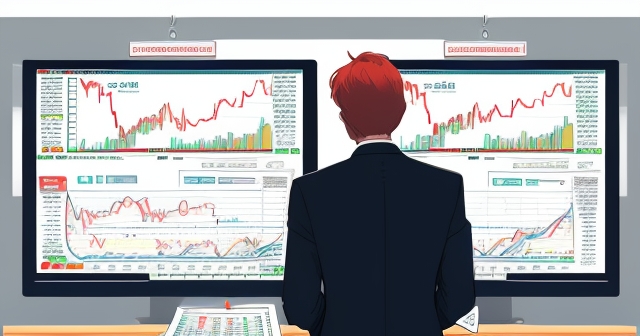
The Ongoing Journey: Your Trading Vocabulary
We have covered a significant range of essential trading terms, moving from the most basic market mechanics to specific order types, market sentiment, diverse financial instruments, corporate actions, critical risk management concepts, regulatory aspects, advanced techniques, and analytical approaches, finally touching on the brokerage infrastructure.
This journey through trading terminology is not a destination, but an ongoing process. The financial markets are constantly evolving, with new instruments, strategies, and regulations emerging over time. Mastering the core vocabulary provides a solid foundation, but a commitment to continuous learning is what will allow you to adapt and thrive.
Understanding these terms empowers you. It enables you to read financial news with comprehension, interpret charts and data feeds accurately, communicate effectively with brokers and other traders, evaluate trading opportunities with greater clarity, and – most importantly – manage the inherent risks of trading more effectively. It transforms confusing jargon into actionable knowledge.
Remember, trading involves risk, and not all traders are profitable. The information we have discussed is for educational purposes, designed to build your understanding of the market’s language. Success in trading requires not only knowledge of terminology but also practical experience, disciplined strategy execution, and sound risk management practices.
Keep exploring, keep learning, and keep building your vocabulary. The more fluent you become in the language of the markets, the better equipped you will be to navigate its complexities and pursue your trading goals. We wish you well on your trading journey!
trading termsFAQ
Q:What is a market order?
A:A market order is an instruction to buy or sell an asset at the best available current price.
Q:What does liquidity mean in trading?
A:Liquidity refers to how easily an asset can be bought or sold without affecting its price significantly.
Q:What is the difference between cash settlement and physical settlement?
A:Cash settlement involves settling a contract in cash, while physical settlement requires the delivery of the actual underlying asset.
You may also like
Calendar
| 一 | 二 | 三 | 四 | 五 | 六 | 日 |
|---|---|---|---|---|---|---|
| 1 | 2 | 3 | 4 | 5 | 6 | 7 |
| 8 | 9 | 10 | 11 | 12 | 13 | 14 |
| 15 | 16 | 17 | 18 | 19 | 20 | 21 |
| 22 | 23 | 24 | 25 | 26 | 27 | 28 |
| 29 | 30 | 31 | ||||
發佈留言
很抱歉,必須登入網站才能發佈留言。